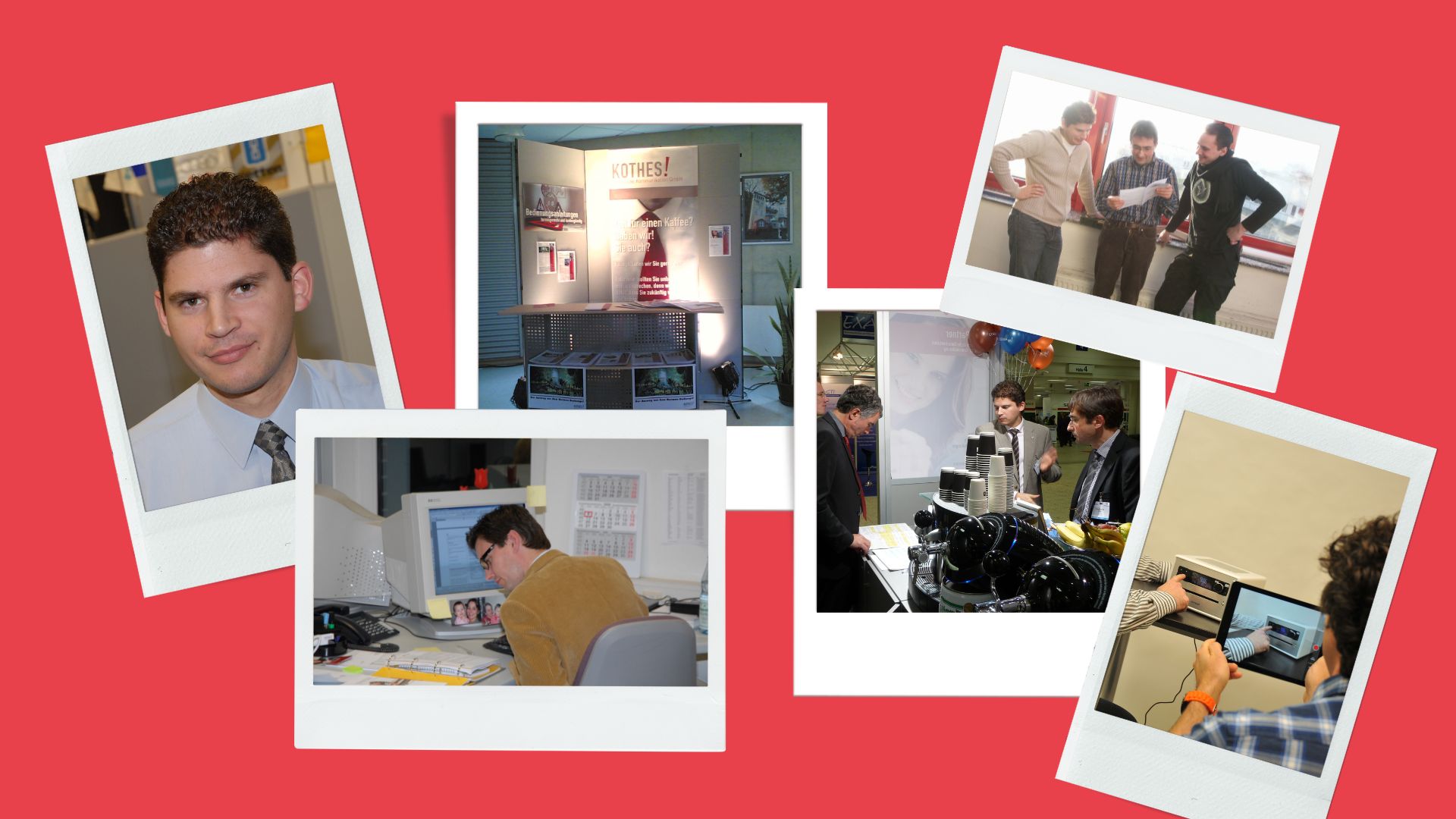“If someone had told me 20 years ago...” When an anniversary is just around the corner, these words are often not long in coming.
Sounds pretty clichéd, I thought as I prepared for this post. And yet I have to admit: when I looked back on the individual stages of kothes’ history while writing, it was precisely these words that kept running through my head. It is probably also part of the founding myth of a company that things develop very differently than you could have imagined at the beginning.
In my case, it definitely was. In the first business plan, for example, I took what at that time seemed a very bold look into the future and predicted a team of ten employees for the next ten years – i.e. a growth of one person per year. In fact, by 2013 there were already about 70 employees and to date we have been able to double this number again. A fantastic development – or to put it in the introductory words: if someone had told me back then where kothes would be today and how big our team would become, I would never have believed it.
Raising awareness of technical documentation
An important reason for that growth is that, from day one, we have been committed to professionally improving technical documentation and making companies aware of the relevance of understandable user information. In order to do this systematically, we developed the documentation check in 2005, in which we compare our customers’ instructions against the current requirements set out in standards and guidelines. The documentation check has continued to evolve significantly up to the present day – from a somewhat dry tabular presentation at the time, it has now become a sophisticated presentation suitable for management. I once had fun and searched our ERP system for docu-check projects. The result was a list of 838 successfully completed documentation checks. I am sure that we have actually made a difference here and have been able to strengthen the position of the technical editorial staff in the companies in the long term.
Living up to our own aspirations
Anyone who uncovers defects should be able to do better themselves. For this reason, we at kothes started very early on to set up a quality assurance process for our editorial team. In the first step, we focused on text quality and hired our first copy editor, Simone, in 2007. In the meantime, with Nathalie as a reinforcement, she continues to ensure that our texts are free of spelling, grammar and stylistic mistakes. But that’s not all: a few years later, Carsten, who has been with us right from the beginning, took over responsibility for our quality management. With this step, we introduced another important quality assurance measure. In addition to copy editing, the quality management team checks each manual from a specialist editorial point of view and thus ensures that all content is understandable, plausible, compliant with standards and prepared in the interests of the user.
Firstly, this process ensures that only high-quality information products leave our premises. Secondly, it means that our technical writers receive constant feedback on their work and thus become better at their job with each project. As far as I can tell, this quality assurance process still distinguishes us from our competitors today.
Speaking of employees: I am really proud that in these 20 years we have managed to gain such a motivated team with so many talents for kothes. We really are a colourful bunch – in addition to graduates of technical writing and translation degrees, we employ many career changers who we train ourselves. This induction and training process is something we have worked hard at over the years. Again and again, we have fine-tuned the training concept in order to achieve the best mix of theory and practice. In this way, we are able to successfully master projects even when they are taken on by a newly hired employee. This is something else I have yet to see other service providers do with the same level of commitment.
Technical evolution in the editorial department
What drives us all at kothes is the will to always deliver the best possible job. That was the case 20 years ago and I still feel that spirit every day. What has changed during this time, of course, are the technical possibilities. They have become more powerful, more diverse and also more complex.
In the initial phase, we deliberately opted for a single content management system to serve all customers. This made us one of thefirst service providers to consistently work with a content management system, even if the customers themselves did not yet have one. This allowed us to gain a lot of experience in XML, modularisation and content management.
A few years ago, we decided to increase the range of systems we use and now work together with all well-known system manufacturers. Our IT development team now has more employees than I originally planned for the entire company. Today, the team is implementing interfaces and automation solutions that we could only dream of in the early days.
Looking back, I can proudly say that we have really achieved a lot – not just for the company, but also for the concept of technical documentation as a whole. These days we rarely find ourselves debating with customers about whether a professionally prepared manual is even necessary: this is now clear to everyone. That said, the road ahead of us is still a long one.
Fit for the future
Digitisation brings with it a lot of opportunities that we can and must use in technical documentation. Accurate, understandable and digitally provided information is becoming increasingly important for our customers in order to master challenges such as skills shortages and knowledge loss due to demographic change. Artificial intelligence will help us create better content in a much shorter time, and it will help users find the right information faster. We are already using the necessary methods to break into this new era. I am more than excited to see how this development will continue and how the world of technology communication will change.
But I already know one thing: At kothes, we will continue to work with great passion to create valuable content for users and support our customers in making their technical writing staff fit for the future.

